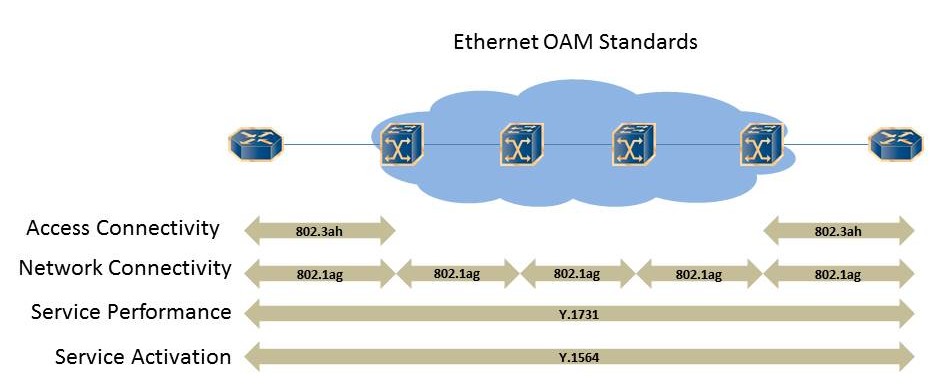What is Ethernet OAM?
Actelis Networks offers industry standard Ethernet OAM capabilities to enable network providers to provision and operate their networks with full visibility and control, simply and efficiently to minimize ongoing OPEX.
Ethernet OAM refers to a set of access, link, test and performance management capabilities developed by ITU-T and IETF which make managing L2 Ethernet networks similar to traditional TDM ones in some aspects, while providing additional functions to deal with L2 aspects of Ethernet services. The key standards associated with Ethernet OAM and supported by Actelis include:
- Connectivity Fault Management (CFM) as defined in IEEE 802.1ag
A set of protocols which enable Ethernet services to be partitioned into maintenance domains with maintenance endpoints (MEP) and intermediate points (MIP) across which continuity check, link trace and loopback tests can be performed as needed to validate connection integrity. - Ethernet OAM (Fault and Performance) as defined in ITU-T Y.1731
This standard extends beyond CFM (802.1ag) to support performance monitoring and testing of key Ethernet service attributes including frame loss, frame delay, and frame delay variation, which are necessary for ensuring conformance to SLAs and verifying end to end service quality. - Ethernet in the First Mile (EFM) Link OAM as defined in IEEE 802.3ah
Designed for testing and maintaining access links. It includes a set of discovery, link monitoring, remote failure detection and remote loopback protocols. - Ethernet Service Activation and Test as defined in ITU-T Y.1564
A set of tests that enable validation of Ethernet service configuration and performance prior to circuits or services becoming operational. Tests include areas such as throughput, frame loss and latency and can be run over a period of time to test network performance under stress during a soak period.
Why is Ethernet OAM Important?
Traditional TDM services typically were physically ‘hard wired’ from point to point or from a service provider CO to the access CPE/CLE. While this posed limitations on flexibility and scalability it did provide accurate visibility to troubleshoot network issues by performing simple loopback tests, for example, to validate if the physical circuit was intact. Ethernet over copper solutions as offered by Actelis, benefit from maintaining physical (Layer 1) traceability, but introduces a virtual connectivity layer with Ethernet virtual circuits (EVCs) at Layer 2, as all Ethernet services do. EVCs can traverse multiple physical paths and often share the same physical path with many other EVCs. This in itself makes it difficult to determine where exactly the source of a problem on an Ethernet circuit is unless it can be correlated to a physical level fault, which may not always occur, particular for performance related issues. This challenge is overcome by the aforementioned Ethernet OAM functions and standards which provide activation, monitoring and test tools for L2 Ethernet service, enabling network operators to actively and proactively manage and maintain their Ethernet service for high availability while minimizing their ongoing OPEX.
